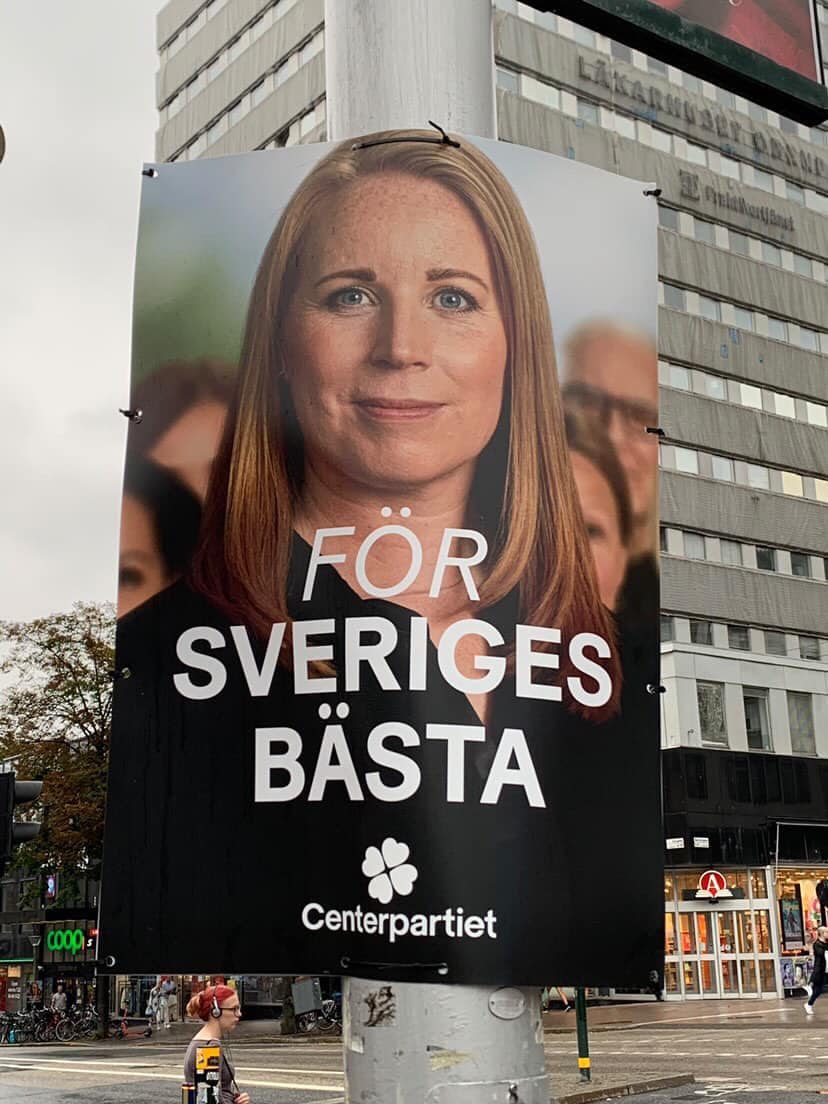The Swedish people have voted. In fact, it’s arguably Sweden’s most consequential election in generations. In a country known for its liberalism and long-periods of governance by the centre-left, the second-largest party is now one with neo-Nazi roots.
But that’s not all. The election took place at a time of great change in Sweden.
Domestically, Sweden is still recovering from the pandemic, with stubbornly high inflation and rising prices. The government in Stockholm has also struggled to get a grip on the country’s complex integration problems and issues with gun violence, particularly in the capital, and in Malmö.
Internationally, Sweden has ditched its centuries-old policy of neutrality. After Russia launched its brutal, unprovoked full-scale invasion of Ukraine in February, Sweden, alongside Finland, applied for NATO membership – a move that would have been unthinkable just a year ago. As Russian brutality in Ukraine became known following the Bucha Massacre, Sweden even began sending military aid.
On the surface, it may have seemed as though the governing left-bloc was facing a Sisyphean task in keeping power, but that’s only half the story.
- The Social Democrats Increased
The Red-Green Bloc (De Rödgröna), consisting of the Social Democrats and the Green Party, grew in the election. The Social Democrats, led by outgoing Prime Minister Magdalena Andersson rose by 2%, climbing to 30.3%, while the Greens, by far the junior partner, grew by 0.7%, up to 5.1%.
It was the bloc’s confidence-and-supply partners who fell back: the Left Party and the Centre Party.
The Left Party lost ground in its usually reliable student hubs of Lund and Uppsala, as a surprising number of young voters turned rightwards.
The Centre Party, having long been a rural and agricultural party, was bulldozed in its traditional heartlands in the central and northern regions. In fact, Centre’s outgoing leader Annie Lööf even fell back in her home region of Jönköping.
But there are reasons why this happened.
The Left Party has come to be seen as being out-of-touch. A good example of this comes from NATO. A majority of Swedes now support joining NATO, whereas the Left Party remains firmly opposed.
The Centre Party’s issues are more fundamental. Having long been seen as a party of the dead centre, they’ve been accused of a leftwards lurch in recent years, due to their work with the Red-Green Bloc. In their heartlands, this didn’t play well.
The election was tight. The Red-Green Bloc grew, and the Alliance (Alliansen), the right bloc, won only a three-seat majority. Across the Swedish left, there will now be a lot of soul searching into what could have been had the Left and Centre Parties advanced.
- The Death of the Centre-Right Has Reached the Nordics
Across Europe in recent years, centre-right parties have lurched to the right. From the Conservatives in the UK to Fidesz in Hungary, centre-right parties have moved towards policies that would’ve once been far removed from their usual platforms.
These moves have mostly been to stop them haemorrhaging votes to far-right parties – and Sweden is no different.
The Moderates have long been the main centre-right force in Sweden, with the Liberals being the junior. The Christian Democrats have traditionally sat further to the right, being a more socially-conservative force.
Enter: the Sweden Democrats.
Going from the fringes of Swedish politics, where they were condemned for their neo-Nazi ties, the Sweden Democrats are now the second-largest party in the Riksdag – and among the largest far-right parties in the EU.
Since entering the Riksdag in 2010, the Sweden Democrats have firmly positioned themselves as the party of the ignored, of those who feel unheard. It worked. They have grown in every election since, and surged this time.
The Sweden Democrats captured 20.5% of the vote, a 3% increase from 2018. 1-in-5 voters backed the party, including many young and first-time voters. They can no longer be shunned.
But the Sweden Democrats aren’t a far-right force that can neatly be put in one box.
- A Voice Now Heard
Whether it’s the Brexit vote in the UK or the election of Donald Trump across the Atlantic, the past decade has seen a sharp surge in voters desperate for change turning to populism. That tide has now reached Sweden.
Across Europe, many far-right parties are largely single issue. In the UK, the UK Independence Party (UKIP) sought to remove Britain from the EU. In France, National Rally wants to fight back against perceived Islamification, while Vox wants to reinstate a more conservative form of Catholicism in Spain.
The Sweden Democrats certainly have key issues – crime, integration, immigration – but can’t comfortably be described as single-issue. This is shown through voters who switched from other parties.
The biggest losers to the Sweden Democrats were the Moderates, who lost 14% of their 2018 voters. Meanwhile, the Social Democrats lost 12%, despite growing overall. The other right-wing parties, the Christian Democrats and the Liberals, lost only 4% and 2% respectively.
You can see the full breakdown here (in Swedish).
Overall, the Alliance lost 20% of their voters, while the Red-Green Bloc and their allies lost 16%. The Sweden Democrats also captured a large number of young and first-time voters.
Their platform is broad, with something to appeal to a wide range of voters. They are no single-issue phenomenon.
Now, the Sweden Democrats will be in government. The time has come to test their broad, unusual coalition of voters – and to see whether or not they can govern in a way that brings Swedes together.

